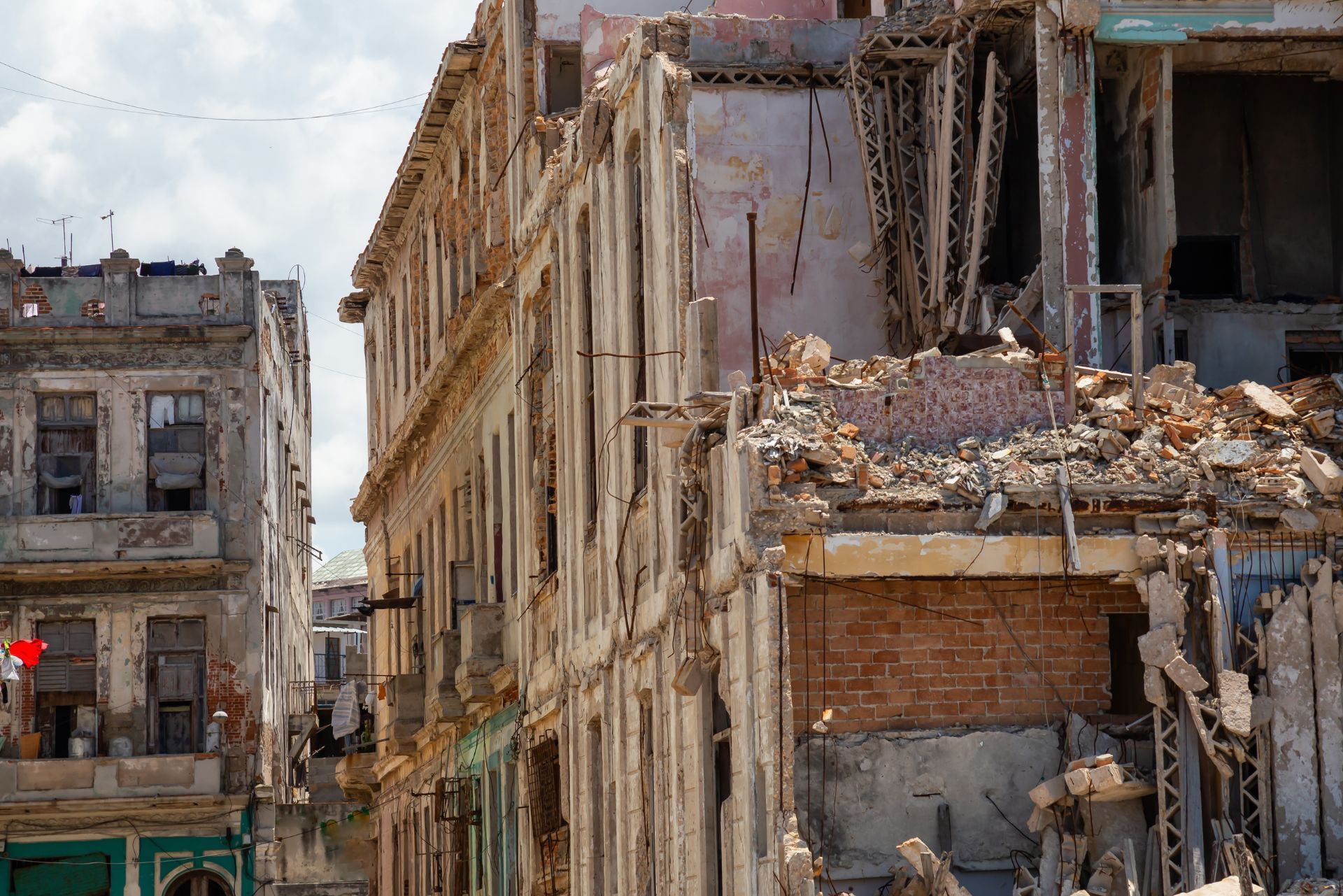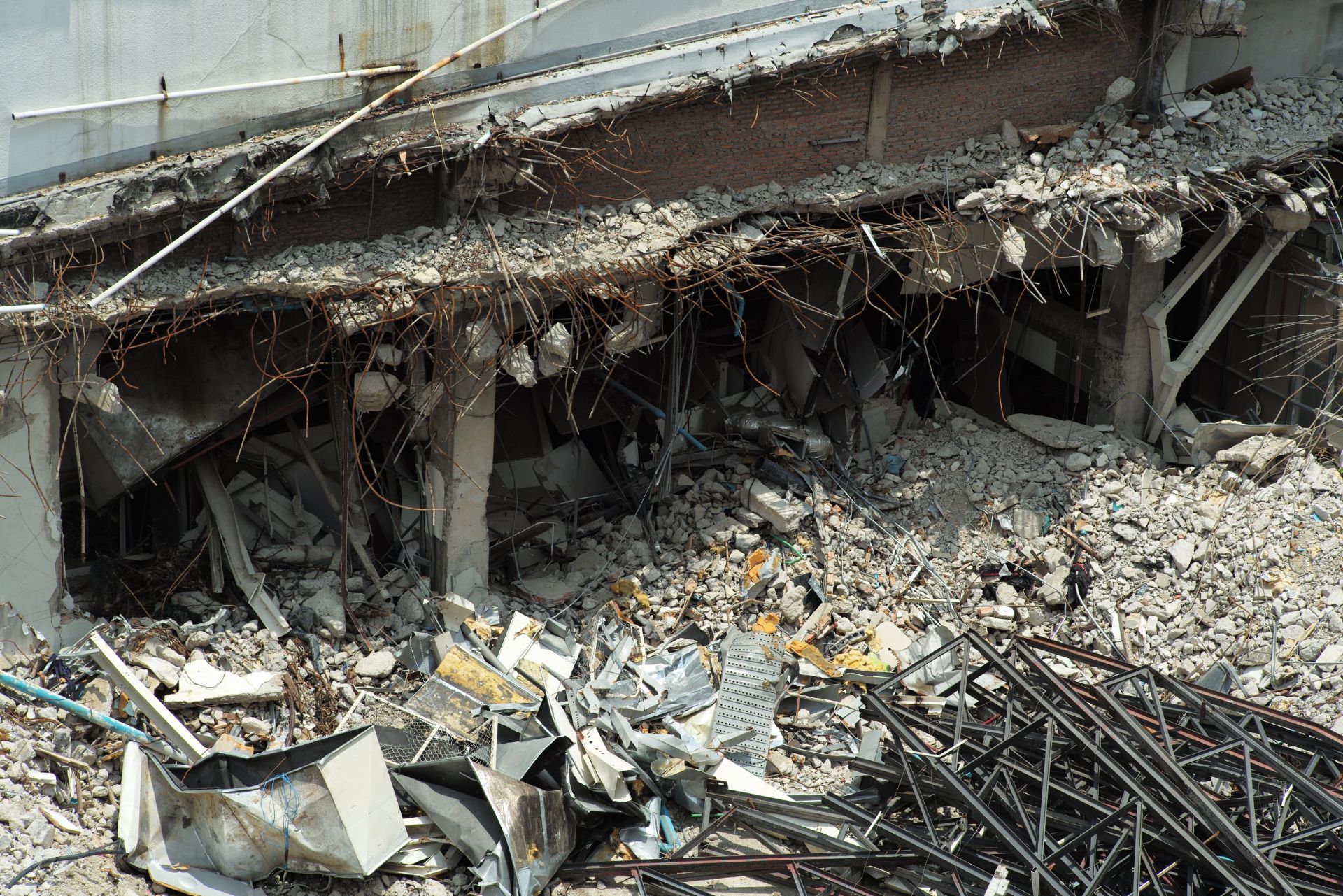Top 3 Recommended Policies

Earthquakes may not be the first disaster that comes to mind when thinking about New York, but the reality is that the state and surrounding regions are not immune to seismic activity. With economic losses from disasters reaching staggering amounts and a significant portion of damages uninsured, understanding earthquake insurance is crucial for businesses operating in New York. This comprehensive guide delves into why earthquake insurance matters, the current market landscape, and what commercial property owners should consider to protect their investments.
Why Earthquake Insurance Matters for New York Businesses
Despite the common perception that earthquakes primarily threaten West Coast states, New York and its neighboring areas face their own seismic risks. Dale Krupowicz, Chief Operating Officer and Partner at Personal Risk Management Solutions, highlights this often-overlooked threat: “Not a lot of people purchase [earthquake insurance], because they don't think there's any need, but as it turns out there's a big fault line that runs in our area from where I am in Westchester County to New Jersey.”
In 2024, economic losses from disaster events totaled USD 318 billion, with 57% of those losses uninsured, underscoring a significant protection gap that could impact businesses severely in the event of an earthquake. For commercial property owners, this gap means that without adequate earthquake insurance, the financial burden of repairs, business interruption, and rebuilding could be devastating.
Understanding the unpredictability of earthquakes is also essential. Karen Collins, Vice President of Property and Environmental for the American Property Casualty Insurance Association (APCIA), states, “Earthquakes are one of the most unpredictable natural catastrophes.” This unpredictability adds complexity to risk management and insurance planning for businesses. The potential for an earthquake to strike at any moment, without warning, means that businesses must be proactive in their planning. This includes not only securing the right insurance coverage but also investing in structural reinforcements and emergency preparedness training for employees. Such measures can mitigate damage and ensure a quicker recovery should an earthquake occur.
Moreover, the repercussions of an earthquake extend beyond immediate physical damage. Businesses may face prolonged disruptions, loss of clientele, and a tarnished reputation in the aftermath of a disaster. For instance, a restaurant that suffers significant damage may not only lose its physical location but also its loyal customer base, which can take years to rebuild. Therefore, having earthquake insurance is not just about protecting physical assets; it’s about safeguarding the very essence of the business itself. For more insight into the economic impact of disasters and the insurance protection gap, visit the Market.us earthquake insurance report.

The Current Earthquake Insurance Market in the U.S. and New York
The earthquake insurance market in the United States is evolving, reflecting growing awareness and demand. Valued at USD 2.39 billion in 2024, the market is projected to more than double to USD 4.87 billion by 2034, growing at a compound annual growth rate (CAGR) of 7.37% from 2025 to 2034. This growth signals increasing recognition of earthquake risks among commercial property owners and insurers alike.
In response to climate-related catastrophes, including earthquakes, major insurers like AIG have launched specialized catastrophe insurance products tailored for businesses. In August 2023, AIG introduced a new offering designed to address the unique challenges posed by climate events, which is an encouraging development for commercial clients seeking comprehensive coverage.
However, despite these advances, earthquake risk continues to outpace mitigation efforts. A 2023 study by the U.S. Geological Survey (USGS) and FEMA estimates the total earthquake economic exposure in the U.S. to be a staggering $107.8 trillion, highlighting the immense potential financial impact.
In New York, the landscape of earthquake insurance is particularly noteworthy. While the state is not typically associated with high seismic activity compared to the West Coast, recent geological studies have indicated that the risk of significant earthquakes is higher than previously thought. This has prompted local insurers to reevaluate their policies and coverage options, leading to a surge in interest from property owners who are now more conscious of the potential for seismic events. The New York City area, with its dense population and high-value properties, presents a unique challenge for insurers as they work to balance risk assessment with the need to provide affordable coverage.
For a detailed look at recent market developments and insurance product innovations, see the
Exactitude Consultancy report on U.S. catastrophe insurance and the
Precedence Research earthquake insurance market forecast. Additionally, the rise of technology in risk assessment, including the use of AI and machine learning, is transforming how insurers evaluate potential claims and set premiums, making the market more dynamic and responsive to emerging threats.
Understanding the Coverage and Costs of Commercial Earthquake Insurance
Commercial earthquake insurance typically covers damage to buildings, equipment, inventory, and may include business interruption losses. However, coverage specifics can vary widely, making it essential for businesses to carefully review policy terms and exclusions. For instance, some policies may cover only the physical damage to the property, while others might extend to loss of income during the recovery period. Businesses should also be aware of any deductibles that apply, as these can significantly impact the net payout in the event of a claim.
One challenge for many businesses is the cost of earthquake insurance. In 2024, the U.S. commercial insurance sector saw a composite rate increase of 3.8%, with property insurance rising by 5.7%. Commercial auto and transportation risks experienced even higher increases at 7.3%, reflecting broader inflationary pressures and risk assessments in the insurance market. Earthquake insurance premiums can be influenced by factors such as building construction, location relative to fault lines, and seismic retrofitting measures. For example, a business located in a high-risk seismic zone may face significantly higher premiums compared to one situated in a region with a lower risk profile. Additionally, businesses that have invested in earthquake-resistant construction techniques may benefit from reduced premiums, as insurers often reward proactive risk management strategies.
Given these dynamics, businesses must weigh the cost of premiums against the potential financial devastation of an uninsured earthquake event. The unpredictability and severity of earthquakes make this a critical risk management consideration. In regions prone to seismic activity, the potential for significant property damage and operational disruption can be catastrophic, leading to long recovery times and substantial financial losses. Furthermore, the psychological impact on employees and the community can also affect a business's reputation and long-term viability. Therefore, it is advisable for businesses to conduct a thorough risk assessment and consider the potential costs of not having adequate coverage.
More information on commercial insurance rate trends can be found in the Reinsurance News report on U.S. commercial insurance rates.
Additionally, businesses should consider consulting with insurance brokers who specialize in commercial earthquake policies. These professionals can provide insights into the nuances of different policies and help tailor coverage to meet specific business needs. They can also assist in navigating the complexities of claims processes and ensuring that businesses are adequately prepared in the event of a disaster. As the landscape of natural disasters continues to evolve, staying informed and proactive about insurance options is more important than ever for safeguarding a business's future.
Challenges and Misconceptions About Earthquake Insurance in New York
One of the biggest hurdles in earthquake insurance adoption is the perception of risk. Many property owners in New York and the Northeast underestimate the likelihood of a damaging earthquake. A 2020 survey by the Insurance Information Institute revealed that only 21% of homeowners in the Northeast had earthquake insurance, a figure that likely mirrors commercial property owners’ attitudes as well.
This underestimation is dangerous because seismic risk is very real in the region. The fault lines running through parts of New York and New Jersey pose a latent threat that could lead to significant damage. Furthermore, the unpredictability of earthquakes means that even areas with historically low activity can experience severe events. For instance, the 1884 New York City earthquake, which registered a magnitude of 5.2, serves as a historical reminder that the region is not immune to seismic activity. Such events, although infrequent, can cause substantial structural damage and disrupt lives, highlighting the importance of preparedness.
Educational efforts and risk communication are essential to bridge this gap. Businesses need to understand that earthquake insurance is not just for West Coast companies but is a vital component of comprehensive risk management across the country. This includes not only the financial implications of potential damage but also the broader impact on business continuity and community resilience. By investing in earthquake insurance, property owners can safeguard their assets and ensure that they are better prepared to recover in the aftermath of a disaster. Additionally, insurance providers can play a crucial role by offering tailored coverage options and resources that help demystify the complexities of earthquake insurance.
For more on regional earthquake risk and insurance adoption, visit the Insurance Business Magazine’s coverage of earthquake experiences in New York.

Steps for New York Businesses to Secure Earthquake Insurance
Securing the right earthquake insurance policy involves several key steps. First, businesses should conduct a thorough risk assessment to understand their exposure based on location, building structure, and operational dependencies. Consulting with insurance professionals who specialize in catastrophe coverage can help clarify options and tailor policies to specific needs. This initial assessment may also include reviewing historical earthquake data for the region, which can provide insights into the frequency and magnitude of past seismic events. Understanding these factors can significantly influence the type of coverage a business might require.
Next, businesses should evaluate the scope of coverage, including property damage, contents, and business interruption. It is also important to inquire about deductibles, limits, and any exclusions that could affect claims. Some insurers may offer discounts or incentives for seismic retrofitting or other mitigation measures, which can reduce premiums and enhance protection. Additionally, businesses should consider the potential impact of an earthquake on their supply chain and customer base, as disruptions can lead to significant financial losses. Engaging with local emergency management agencies can provide further insights into community preparedness and resources available to businesses.
Finally, staying informed about market developments and new insurance products is beneficial. With insurers like AIG launching innovative catastrophe insurance solutions, businesses have more choices than ever to protect themselves against earthquake risks. Regularly reviewing and updating insurance policies in light of changing business operations or advancements in risk management practices can also ensure that coverage remains adequate. Furthermore, businesses might benefit from participating in industry forums or workshops focused on disaster preparedness, which can provide networking opportunities and access to the latest best practices in risk management.
For guidance on earthquake insurance considerations for commercial clients, the
IA Magazine article on earthquake insurance offers valuable insights. Additionally, businesses should consider collaborating with local chambers of commerce or industry associations that may offer resources, training, and support tailored to navigating the complexities of earthquake insurance and overall disaster preparedness.
Conclusion: The Importance of Preparedness and Protection
Earthquake insurance is an essential yet often overlooked component of risk management for New York commercial properties. With the unpredictability of earthquakes and the substantial financial exposure businesses face, having adequate coverage can mean the difference between recovery and ruin.
As the earthquake insurance market grows and evolves, New York businesses have more opportunities to secure tailored protection that fits their unique risk profiles. By understanding the risks, dispelling misconceptions, and proactively seeking coverage, commercial property owners can safeguard their investments and ensure business continuity in the face of seismic threats.
Given the significant uninsured losses reported in 2024 and the ongoing seismic exposure, now is the time for New York businesses to seriously consider earthquake insurance as part of their comprehensive risk strategy.
Contact Us
Phone
Location
